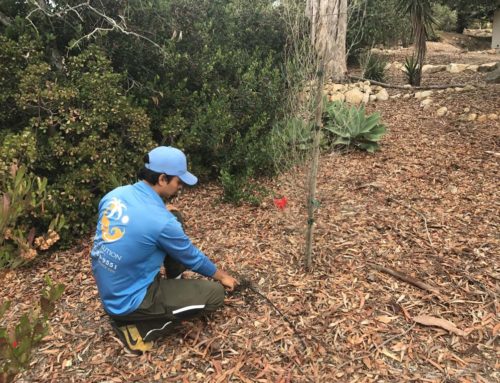How to Edge a Garden Bed With Brick

Garden Bed With Brick
Order the Bricks
Installing a landscape border made of bricks is an easy low cost way to dress up a garden bed and separate it from the lawn. The project is best down with clay pavers—sometimes called severe weather bricks for their ability to stand up to the cold and frost.
Start with a rope to measure the length of your bed along its edge, making sure the rope follows the curves and keeping it snug to the grass line. With the full length traced with the rope, mark it at the end of the bed, then pull the rope taut and use a measuring tape to find the bed line’s true length. Divide that length in inches by four—or the width of the bricks as they will sit—tacking on ten percent to ensure an adequate supply. Now you are ready to order your bricks. Use the length measurements from this step to determine how much gravel base, setting sand, and Portland cement, and jointing sand to order, as well.
Cutting the Bricks
Next, lay the bricks at the curves, lining the edge of the bed with the bricks, and cutting them as needed at the tighter angles. If you’re comfortable, “eyeball” the bricks as they sit along the curve, or better, find the center of the curve (the rope can help with this) and calculate the number of bricks needed, leaving a consistent pie shaped gap in between. The gap should be no wider than the width of a single block.
Place the brick over the gap and then use a masonry pencil to mark where the brick over laps the bricks below. Flip it over and connect the mark to create a full cut line. Use a circular saw with a segmented diamond blade to make the cuts. Be sure to pass through the brick to make a punch cut. If the saw does not have a water attachment, keep a punctured water bottle on hand and let the water trickle over the brick during cuts to mitigate dust. Plunge the brick back through the saw on its opposite side until a complete cut has been made.
Dig the Trench
Once the bricks have been cut, it’s time to dig the trench. With tarp along the side of the bed, use a trenching shovel to cut into the grass line. Use a brick as reference to determine the width needed, and mark the opposite side of the trench with the shovel. Dig a second line parallel to the first, but several inches beyond where the end of the brick will lie to ensure a complete fit. As you work the two lines, dig up the soil in between, tossing the excess onto the tarp for haul off as you go.
It is important that the trench be deep enough to accommodate all the layers of the brick installation. Measure the depth of your trench as you go; it should be at least six inches deep for the layers of gravel base, stone dust, and, of course, the bricks which should sit flush with the ground when it’s time to lay them. Use a garden hoe to scrape out any excess soil from the trench and place onto the tarp. When the job is finished, the freshly dug soil might come in handy in building up your new planting bed.
Lay the Base
With the trench dug, pour the paver base material into the trench, spreading it evenly to a thickness of about three inches. Use hand tamper to pack it down and set it even. Next, use a wheelbarrow to mix six shovelfuls of stone dust to every single shovelful of Portland cement. The cement helps stiffen the mixture and hold the bricks in place. As you mix, mist the mixture slightly with water and stir it with the garden hoe. When the mixture is ready, shovel it into the trench and use a trowel to spread it out into a layer about an inch deep.
Set the Bricks
Work along the edge of the bed to set the brick into place, one by one, checking their position for consistency and levelness as you go. A rubber mallet is best for tapping the bricks into place until they are flush with the earth on each end, though you may need to pull them out and remove some of the setting sand mixture to get them truly even. Use a two-foot level to ensure the bricks are set flush with each other, too, and are even with the lawn. Fan out the bricks around the gentle curves, using the quantity determined during the first stage of the project.
For tight curves, set the key stone bricks that were cut earlier at the sharpest point in the curve. With the edging in place, work down the line of bricks and press down any visible paver base in the trench with the rubber mallet. Cover the remainder of the trench with soil, double checking to make sure that all the bricks are firmly against the grass line to create a uniform look. Then fill in the joints with the polymeric jointing sand, pouring the sand over the bricks and filling the gaps between them with a brush. Use a paint brush to push any loose sand into the gaps and tap the bricks again with a rubber mallet to set the sand in place.
Finally, spray the bricks gently with water to activate and set the polymeric sand and lock the bricks into place. That’s it! Now you can select plants to put in your new garden bed.
Excerpted from This Old House







Leave A Comment
You must be logged in to post a comment.